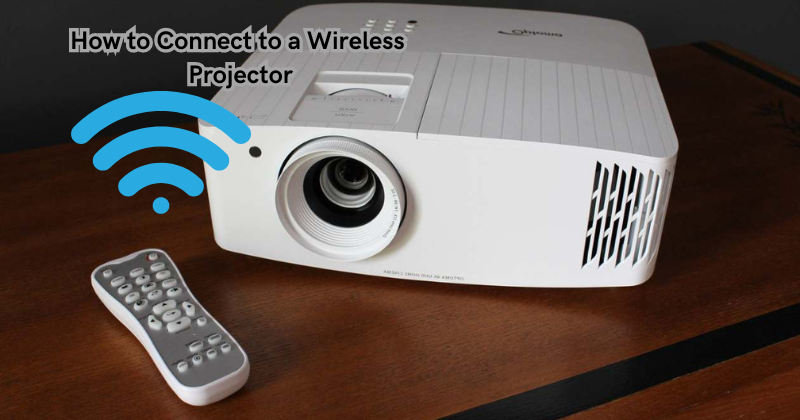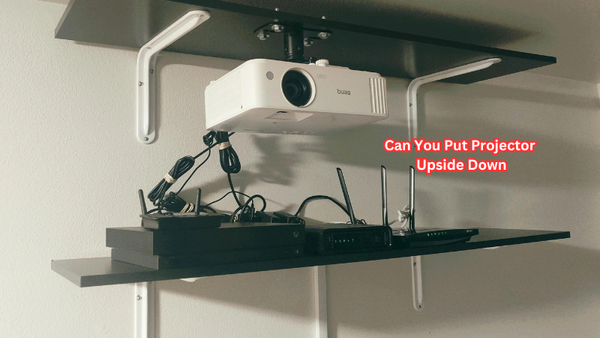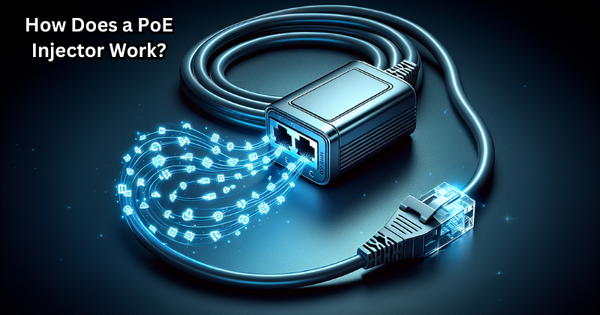In today's dynamic work and presentation environments, seamlessly connecting to a wireless projector is essential for delivering impactful and engaging presentations.
Whether in a conference room, classroom, or boardroom, the convenience and flexibility offered by wireless connectivity streamline the presentation process and eliminate the need for cumbersome cables.
Presenters can effortlessly share content from their devices onto a larger screen by leveraging wireless technology, fostering collaboration and enhancing audience engagement.
This guide aims to provide step-by-step instructions and best practices for connecting to a wireless projector, empowering presenters to harness the full potential of wireless connectivity and easily deliver compelling presentations. So, let's get started!
Types of Wireless Projectors
Before diving into the connection process, it is essential to understand the different types of wireless projectors available in the market. The two most common types are:
- Wi-Fi Projectors: These projectors connect to a Wi-Fi network and allow multiple devices connected to the same network to share content wirelessly.
- Bluetooth Projectors: As the name suggests, these projectors utilize Bluetooth technology to connect to devices and display content wirelessly.
Both types offer similar functionalities, but Wi-Fi projectors tend to have a wider range and support multiple connections simultaneously, making them more suitable for larger presentation settings.
Understand Configure Your Projector's Wireless Settings
Before attempting to connect to a wireless projector, it is crucial to understand and configure the projector's wireless settings. This step may vary slightly depending on the type and model of your projector. Generally, you can access the wireless settings through a menu or button on the remote control or the projector.
Once in the wireless settings, ensure that the Wi-Fi or Bluetooth (depending on the type) function is enabled and that the projector is connected to a reliable network. It would also be helpful to familiarize yourself with any security settings, such as passwords or network restrictions, to avoid connection issues during your presentation.
For wired projectors that offer wireless connectivity through adapters, ensure the adapter is correctly connected and configured before proceeding with the connection process. The projector's HDMI port must also be set as the input source for the adapter.
Step-by-Step Guide: How to Connect to a Wireless Projector
Now that we have an overview of the types of wireless projectors let's dive into the steps to connect your device to one.
Step 1: Check for Compatibility
Before attempting to connect to a wireless projector, ensuring that your device and the projector are compatible is crucial. Most modern devices, including laptops, tablets, and smartphones, have built-in Wi-Fi capabilities. However, older devices may require additional hardware or adapters to enable wireless connectivity.
It is also essential to check if the projector supports the type of wireless connection your device offers, such as Wi-Fi or Bluetooth. Wireless network standards like 802.11ac or Bluetooth 5.0 may also impact compatibility. Mobile devices and laptops typically support these standards, but it is always best to double-check before attempting the connection.
Step 2: Connect to the Projector's Network
Once compatibility is confirmed, the next step is to connect your device to the projector's network. Wi-Fi projectors typically have their own wireless network name (SSID) and password displayed on the projector screen or in the user manual.
On your device, navigate to the Wi-Fi settings and select the projector's network from the list of available networks. Enter the password when prompted, and your device should now be connected to the projector's network.
A Wireless LAN module may be required to enable this connection. The same WI-FI network can be utilized to connect multiple devices.
Step 3: Launch the Projection App
Your projector may come with a designated app for wireless projection or require you to download one from the app store.
Launch the app and follow the on-screen instructions to establish a connection between your device and the projector. The projector can wirelessly be connected to your device by entering the IP address provided in the app.
Step 4: Adjust Settings and Start Projection
Once connected, you may need to adjust some settings on your device or the projection app, such as display resolution or orientation, before initiating projection.
Once everything is set up, start projecting by selecting the content you want to display on the projector screen. Wireless mode setting is recommended to be set as per the instructions provided in the projector's user manual.
Best Practices for Wireless Projection
- Ensure a strong and stable network connection between your device and the projector.
- Close any unnecessary apps or programs running in the background on your device to optimize performance.
- Test the projection before your presentation to ensure everything is working correctly.
- Keep your device charged or plugged in during the presentation.
- Consider using a wireless presenter remote for easier navigation and control of your presentation.
These best practices will help you deliver a seamless and professional wireless projection experience. With the increasing popularity of wireless technology, it is becoming easier to connect and present wirelessly. So, next time you have a presentation, consider ditching the tangled cables and try out a wireless projector for a hassle-free and impressive presentation.
How to Solve Wireless Connection to Projector Issues
Despite following all the steps and best practices, you may encounter issues when trying to connect your device to a wireless projector. Here are some common problems and solutions to help troubleshoot any connection issues:
- Connection Failure: If you are unable to establish a connection between your device and the projector, ensure that both devices are on the same network and within range of each other. If the issue persists, try restarting both devices and following the connection steps again.
- Connection Drops: If you experience frequent disconnections during your presentation, try minimizing the distance between your device and the projector or connecting to a stronger network. Also, make sure that other wireless devices do not interfere with the connection.
- Compatibility Issues: If your device is compatible but still unable to connect, try using a different wireless network or connecting through Bluetooth. You may also need to update your device's network drivers for a successful connection. Bluetooth devices need to be within the range of 10 meters for successful connectivity.
- Low-Quality Projection: If the projected image is of poor quality, make sure that your device and projector are set to the same display resolution and adjust the settings accordingly if necessary.
These simple troubleshooting steps will help you overcome any potential wireless connectivity issues and ensure a smooth presentation. As technology continues to advance, the process of connecting to a wireless projector is becoming more effortless and accessible.
For Wired Connection:
If you encounter any issues with wireless projection or your device does not have built-in Wi-Fi capabilities, you can still connect to a projector using a wired connection.
Simply connect an HDMI or VGA cable from your device to the projector and adjust the display settings as needed. This option may be more suitable for smaller presentations or when a reliable network connection is not available. VGA connection may also be preferred for older devices that do not support wireless projection.
The projector's VGA port can be easily identified by its 15-pin connector and is a popular choice for connecting to desktop computers or older laptops. The projector's USB port can also be used to connect the device via a USB cable, depending on the model and compatibility.
USB cable enables both display and audio output. External display mode setting is recommended to be set as per the instructions provided in the projector's user manual.
If Display Device is not Shown in the List of Available Devices:
If your device is not showing up in the list of available devices when attempting wireless projection, try these troubleshooting steps:
- Restart Both Devices: As mentioned before, restarting both your device and the projector can help resolve connectivity issues.
- Check Network Settings: Make sure that your device's network settings allow for screen mirroring or wireless display. You may need to make changes in the settings or contact your network administrator for assistance.
- Use a Different Network: If possible, try connecting to a different Wi-Fi network or creating a hotspot from your device for projection. This can help rule out any potential network compatibility issues. The wireless module mode setting is recommended to be set as per the instructions provided in the projector's
- Update Device Drivers: Ensure your device's drivers are up-to-date and compatible with wireless screen mirroring. You may need to update the drivers manually or use a driver updating tool for better performance.
- Contact Support: If you have tried all the troubleshooting steps and still cannot connect wirelessly, contact the projector manufacturer for further assistance. They may provide specific instructions or software updates to resolve any compatibility issues with your device.
- Consider Using a Wired Connection: You can always use a wired connection as an alternative for wireless projection if necessary. Use an HDMI cable for high-quality projection or a VGA cable for older devices. Connect the projector HDMI or VGA port to your device and adjust the display settings accordingly for successful projection.
Fix your screen resolution, connections, and display settings for a seamless presentation. So, don't let wireless connectivity issues hold you back next time you have a presentation. With these troubleshooting tips, you can confidently deliver your presentation without interruptions or technical difficulties.
FAQs
Can I connect my phone screen to the projector?
Yes, most modern smartphones have built-in wireless display capabilities that allow you to connect to a projector wirelessly. If your phone does not support wireless projection, you can use a wired connection or screen mirroring app for projection.
How do I update my device's network drivers?
You can manually update your device's network drivers by going to the manufacturer's website and downloading the latest version. Alternatively, you can use a driver updating tool for easier and more efficient updates.
Can I connect to a projector without Wi-Fi?
Yes, you can use a wired connection to connect to a projector without Wi-Fi. Simply use your device's HDMI or VGA cable to the projector and adjust the display settings accordingly for successful projection. USB cable can also be used depending on the model and compatibility.
How do I cast my screen?
Casting your screen refers to wirelessly projecting your device's display onto a larger screen, such as a projector. You can do this by enabling wireless display or screen mirroring on your device and connecting to the projector's network.
Conclusion
In conclusion, mastering the art of connecting to a wireless projector opens up possibilities for seamless and engaging presentations.
By following the outlined steps and best practices, presenters can embrace the freedom of movement, enhance audience interaction, and elevate their presentation delivery.
Eliminating cable clutter, the ability to effortlessly switch presenters, and the flexibility to share content from various devices contribute to a more dynamic and efficient presentation experience.
Embracing wireless connectivity streamlines the technical aspects of presenting and fosters a collaborative environment, enabling presenters to focus on delivering impactful content.
As technology continues to evolve, understanding and harnessing the power of wireless projection is invaluable for modern presenters seeking to captivate their audiences.





